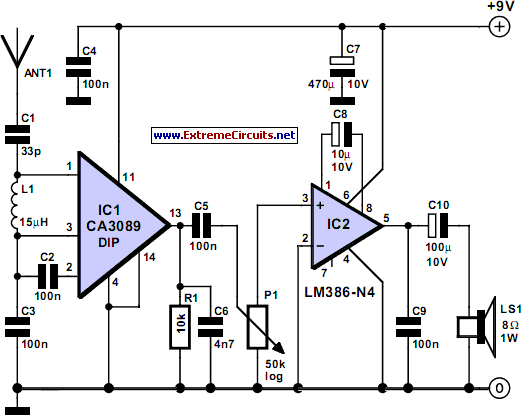Home » Circuits
Shortwave Monitor
This broadband AM receiver enables you to ‘monitor’ the shortwave radio band. The circuit has been deliberately designed to have low selectivity and is most sensitive in the range from 6 to 20 MHz. This frequency range contains most of the shortwave broadcast stations. In this configuration, whichever station has the strongest signal will be the easiest to hear. An interesting fact is that the signal strength of stations in this band changes quite a lot. This is because the ionosphere reflects the radio signals. Because this layer of the atmosphere is in constant motion, the received signal strengths from different directions are subject to continuous variation. During testing of our prototype Radio Netherlands World Service, Radio Finland and Deutsche Welle alternated as the strongest station at regular intervals.Circuit diagram:
This receiver not only gives a good indication of the myriad of stations on offer in the short-wave band but is also an excellent tool for monitoring the state of the ionosphere. The circuit actually consists of no more than an RF and an AF amplifier. The high-frequency amplification is carried out by the IF stage of a CA3089. This IC is actually intended for FM receivers, but the FM section is not used here. The internal level detector provides a signal of sufficient strength to drive an audio amplifier directly. An LM386 was selected for this task. This IC can directly drive an 8-Ω loudspeaker or headphones without any difficulty.
The power supply voltage is 9 V. Because of the modest power consumption a 9-V battery is very suitable. In addition, the circuit will work down to a voltage of about 5.5 V, so that the battery life will be extra long. The antenna will require a little experimentation. We obtained reasonable results with a piece of wire 50 cm long. A length of wire in the range of 5 to 15 meters should provide even better results at these frequencies.
Author: Gert Baars - Copyright: Elektor July-August 2004

